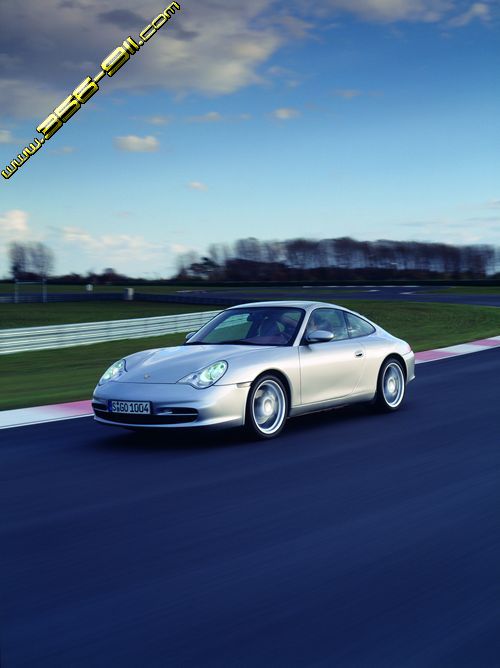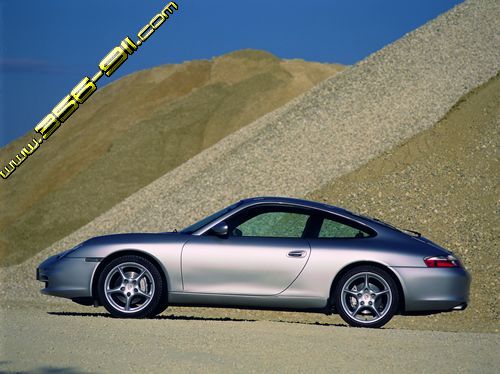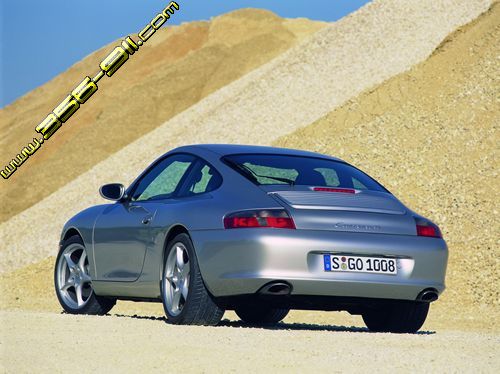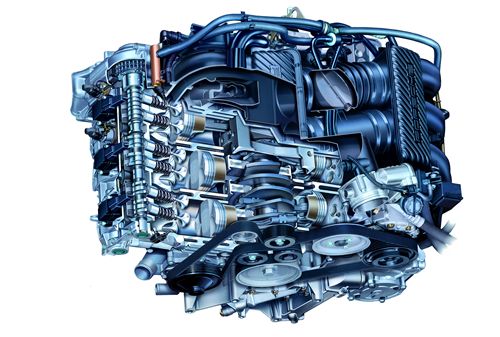Porsche 996 Carrera 4 2004




Porsche 911 Carrera 4
Highlights
Permanent four-wheel drive with perfect power distribution
The 911 Carrera 4 comes as standard with four-wheel drive.Variable distribution of engine power to the front axle by a viscous clutch in the front differential guarantees excellent traction and supreme driving safety on all kinds of roads and under all conditions,without the driver being required to adjust the traction control systems.
Porsche Stability Management
The 911 Carrera 4 is fitted as standard with PSM Porsche Stability Management serving to intervene in the engine management and brake system in order to stabilise the car in both longitudinal and lateral direction whenever the car is driven to - or beyond - the extreme.. And PSM has been tuned by Porsche's suspension engineers to ensure that the sporting character of the 911 is not suppressed by premature intervention.Indeed,the objective in this process was to provide brief but essential assistance whenever necessary on all four wheels,should the car come too close to the laws of physics.
Superior driving safety,outstanding driving qualities
The springs,anti-roll bars and dampers are all specially tuned and modified to reflect the dynamic driving qualities of the four-wheel-drive model.Consistent adjustment of axle geo- metry to four-wheel drive and retuned elasticity on the front axle ensure neutral behaviour all the way to extreme limits,particularly in bends.
320 horses spread out on all four wheels
Displacing 3.6 litres and developing maximum output of 235 kW (320 bhp),the power unit ensures supreme performance also in the 911 Carrera 4,with a minimum of 5 and a maxi- mum of 40 per cent of the drive power going to the front wheels,depending on road con- ditions.Acceleration from 0 - 100 km//h,as on the rear-wheel-drive Carrera,is in exactly five seconds.At 285 km/h or 177 mph (six-speed manual gearbox),the top speed is also the same.
Discreet signs of distinction
Applying the principle of being "great to look at but even greater inside ",the Carrera 4 does not in any way flaunt its wares.The Carrera 4 model designation stands out in titanium colour on the engine compartment lid and is also to be admired on the black wheel hub covers. Further visible signs of distinction are the titanium-coloured brake callipers on the Carrera 4.
Porsche 911 Carrera 4
Traction on Four Wheels
The 911 Carrera 4 - both in coupé and cabriolet guise - comes as standard with four--wheel drive and PSM Porsche Stability Management electronic driving dynamics control.Benefitting from four-wheel-drive complete with a viscous multiple-plate clutch,the front wheels con- sistently convey a minimum of 5 per cent and,if required,a maximum of 40 per cent of the engine's drive power to the road.The focus,however,is not so much on traction,but rather on the wish to achieve supreme driving characteristics and road safety at all times.
The viscous multiple-plate clutch is housed in the front axle drive unit,conveying drive power to the front axle and compensating for any difference in engine speed between the two axles.Like a multiple-plate lock,the clutch is made up of inner plates fastened to the hub and outer plates connected to the housing.Silicon fluid comes between the plates in a totally sealed compartment.As soon as there is a difference in speed,shear forces between the silicon fluid and the plates transmit torque and drive power to the front axle as required.
One of the advantages of this special concept of four-wheel drive is that it avoids the car "pushing " over the front wheels in a bend,,ensuring neutral behaviour in bends and,quite generally,under all driving conditions.A further advantage,particularly in a sports car,is the low weight,all components of the four-wheel-drive system weighing a mere 55 kilos or 121 lb.This makes Porsche's dynamic four-wheel-drive system one of the lightest in the market.
Modified front axle
At the front of the car the entire body structure is modified to meet the additional drive re- quirements.This involves modifications in the area of the front axle itself and different design of the fuel tank with the same capacity as before.The emergency wheel has been replaced by a more compact folding wheel.Despite these changes,the capacity of the front luggage compartment is still100 litres.
PSM for extra driving safety
The combination of four-wheel drive designed consistently for sports motoring and electronic Porsche Stability Management (PSM)chassis and suspension control geared to the specific features of the car ensures not only a particularly high standard of driving safety,but also that driving pleasure so typical of the marque.
This Porsche's engineers are able to provide by means of special control characteristics not to be found in similar systems featured in other cars.As a result,all Carrera models re- tain the agile,sporting and dynamic behaviour of a Porsche all the way to the extreme limit.Thanks to the substantial safety reserves offered by the suspension,PSM only has to intervene in the car's steering behaviour on dry roads when driven to the extreme under race-like conditions.Any minor deviations in directional stability caused by load changes or partial application of the brakes in a bend are corrected by PSM discreetly and almost imperceptibly.Porsche's engineers only allow PSM to intervene at an earlier point and more energetically on wet or slippery roads and,in particular,on varying road surfaces with diffe- rent frictional values right and left.
The PSM principle is based on two fundamental control strategies:The first feature is dyna- mic longitudinal control incorporating anti-lock brakes,anti-slip control and the automatic brake differential to ensure stable acceleration and application of the brakes on straight stretches of the road and in bends.The second crucial PSM feature is dynamic lateral con- trol keeping the car on course even under high lateral forces in a bend.The corrections required for this purpose are provided by the specific application of individual brakes:Any tendency to oversteer with the rear end swerving round is counteracted by careful application of brake on the outer front wheel in a bend.Understeering,in turn,is prevented by apply- ing the brake on the inner rear wheel.The dynamic longitudinal control systems are able to enhance these functions,E-gas allowing a change in the position of the throttle butterfly tailored in each case to individual,specific requirements.
PSM uses a number of sensors and control functions to ensure its high standard of precision and control quality.The wheel speed sensors first introduced with ABS provide not only information on speed,acceleration and deceleration,but are also able to "sense " bends and their radius by checking the left-to-right difference in wheel rotation speed.Other control functions are performed by a steering angle sensor,a lateral acceleration sensor and a yaw angle sensor detecting any inclination of the car to drift on the road.All data determined by the sensors goes straight to the PSM "brain ",where the information received is evaluated within fractions of a second and instructions are transferred to the E-gas or the brake system. As a result,PSM responds much faster to threatening situations than even a routined driver.
Drivers who nevertheless wish to experience the natural dynamic behaviour of their Carrera in extreme lateral acceleration on a race track may of course temporarily deactivate Porsche Stability Management via a switch on the instrument panel.And even then the thrill of motoring in sporting style does not become an excessive risk,since all the driver has to do when his car starts to swerve at an unwanted angle is kick down the brake pedal in order to reactivate PSM.But it is of course important to note that while PSM is able to extend the laws of physics in all cases,it cannot override these laws as such.
From 0 - 100 km//h in five seconds
The Porsche Carrera 4 models also come with the flat-six power unit now increased in size to 3.6 litres and developing maximum output of 235 kW (320 bhp).Top speed both of the coupé and cabriolet is 285 km/h or 177 mph.Accelerating to 100 km/h,on the other hand, the coupé is 0.2 seconds faster,completing this important sprint in five seconds.
